India
Welcome to India
From the towering Himalayan peaks in the north to the tropical beaches of the south, and from the Thar Desert in the west to the lush Sundarbans mangroves in the east, India offers an unparalleled variety of experiences. Its rich history is reflected in magnificent forts, palaces, temples, and UNESCO World Heritage Sites, while its bustling cities blend ancient traditions with modern dynamism. India is a land of contrasts and colors, where spiritual heritage, culinary delights, and warm hospitality await every traveler.
1.
Unparalleled Cultural Heritage: Afghanistan is home to some of the world’s most remarkable historical sites, including the ancient Buddhist statues of Bamyan, the Minaret of Jam, and the stunning mosques of Herat and Mazar-i-Sharif. These sites offer a glimpse into the country’s rich tapestry of civilizations and religious traditions.
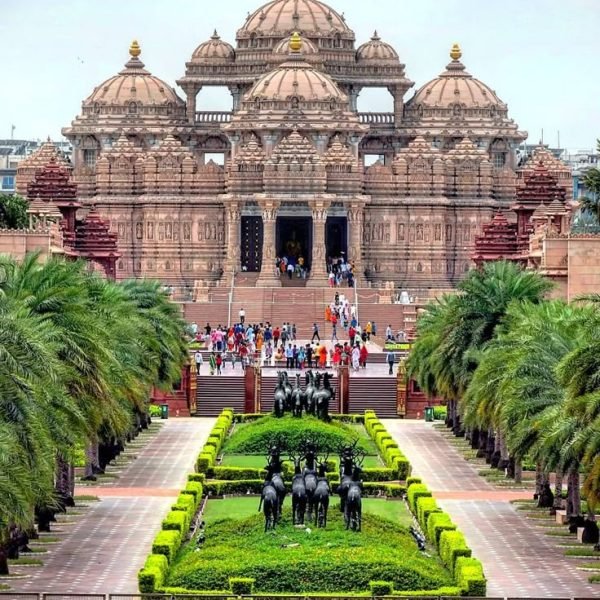
2.
Diverse Experiences and Landscapes: Whether you want to trek in the Himalayas, safari in tiger reserves, explore bustling markets, relax on serene beaches, or savor world-renowned cuisine, India offers a spectrum of adventures that can transform your perspective and enrich your soul.
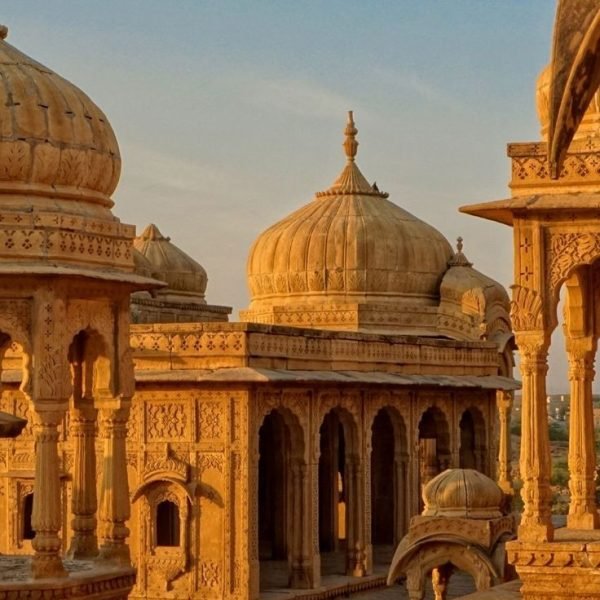
Planning Your Trip
Visa Information
Most international travelers to India require a visa. India offers an e-Visa facility for citizens of many countries, which is convenient and quick to obtain online for tourism purposes. The e-Visa is typically valid for thirty or sixty days with double or multiple entries. For longer stays or other types of travel such as business or medical, a regular visa must be applied for at an Indian consulate or embassy. It is advisable to check the latest visa policies before travel, as requirements can change.
Best Time to Visit
India’s climate varies widely, but the most favorable time for travel is generally from October to May, when the weather is cooler and drier across most regions. The winter months are ideal for visiting northern India and Rajasthan, avoiding the intense summer heat and monsoon rains. The Himalayan region is best visited in late spring or early autumn for trekking and sightseeing. The monsoon season brings heavy rains, which can disrupt travel but also rejuvenate the landscape, especially in southern and western India.
Getting To and Around
India is well connected internationally through major airports such as:
- Indira Gandhi International Airport (Delhi) – the main gateway for northern India.
- Chhatrapati Shivaji Maharaj International Airport (Mumbai) – a key hub for western India.
Other international airports include Chennai, Bengaluru, and Kolkata, providing access to different regions.
Getting Around India
Travel within India can be an adventure in itself:
- Trains: India’s extensive railway network is one of the best ways to see the country. Trains range from budget to luxury services like the Rajdhani and Shatabdi Express, connecting major cities and tourist destinations. Booking in advance is recommended.
- Domestic Flights: For longer distances, domestic flights are efficient and affordable, connecting major cities and tourist hubs.
- Road Transport: Buses, taxis, and app-based cabs (Ola, Uber) are widely available. Private car hires with drivers are common for flexible travel, especially in Rajasthan and other tourist regions.
- Local Transport: Within cities, metros, auto-rickshaws, and cycle-rickshaws offer convenient short-distance travel.
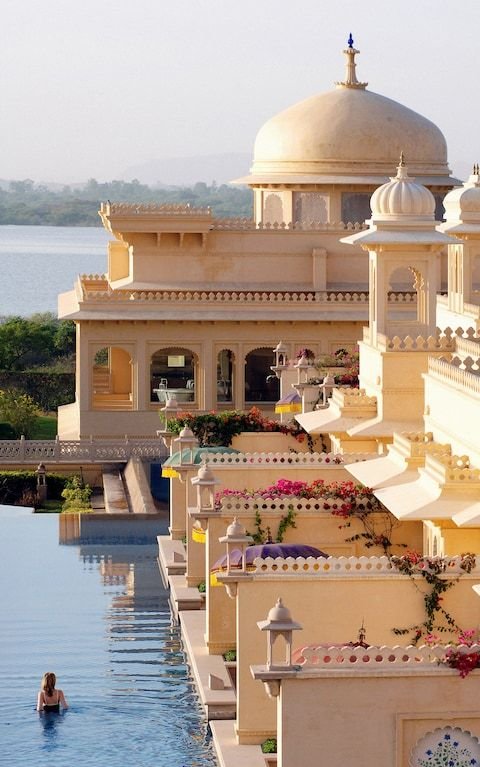
Accommodation
India’s accommodation scene in 2025 is as diverse and vibrant as the country itself, offering options that cater to every traveler’s taste, budget, and desire for comfort. Whether you seek the grandeur of royal palaces, the sleek modernity of five-star hotels, the charm of boutique properties, or the cozy familiarity of serviced apartments, India has it all.
Accommodation Options
Luxury Hotels and Palatial Stays
For travelers looking to immerse themselves in opulence, India boasts some of the world’s finest luxury hotels and heritage palaces. These properties are not just places to stay but experiences in themselves, blending impeccable service with architectural grandeur and cultural richness.
Iconic properties such as the Taj Lake Palace in Udaipur, floating serenely on Lake Pichola, offer guests a regal experience with palatial rooms, stunning views, and exquisite service. Similarly, the Oberoi Rajvilas in Jaipur presents a sprawling 32-acre estate that marries traditional Rajasthani architecture with modern luxury. In metropolitan hubs, The Leela Palace in New Delhi and The St. Regis in Mumbai provide lavish interiors, world-class dining, and state-of-the-art amenities, perfect for those who appreciate urban sophistication with a royal touch.
The Oberoi Amarvilas in Agra is famed for its breathtaking views of the Taj Mahal, allowing guests to witness the monument’s beauty from the comfort of their rooms. In Bangalore, The Ritz-Carlton offers a blend of contemporary luxury and elegant ambiance, ideal for both business and leisure travelers.
Many of these luxury hotels emphasize sustainability and eco-consciousness, with properties like ITC Gardenia in Bengaluru achieving LEED Platinum certification. Guests can also enjoy curated cultural experiences, from traditional dance performances to regional culinary festivals, enriching their stay beyond the usual hotel comforts.
Boutique Hotels and Unique Retreats
Beyond the grand hotels, India offers a growing number of boutique properties that provide personalized service and a more intimate atmosphere. These are often located in heritage buildings, hill stations, or tranquil rural settings, offering a peaceful retreat from the bustle of city life.
For example, resorts like Ananta Spa and Resort in Pushkar combine luxury with nature’s serenity, offering wellness amenities and attentive hospitality. Similarly, The Raviz Kadavu in Kozhikode blends Kerala’s rich heritage with modern comforts, making it a perfect destination for relaxation and cultural immersion.
Serviced Apartments and Corporate Stays
For travelers on extended visits or business trips, serviced apartments are an excellent choice. These accommodations provide the convenience of a hotel with the comforts of home, including fully equipped kitchens, living spaces, Wi-Fi, laundry services, and housekeeping. Cities like Mumbai, Bengaluru, Gurgaon, and Pune have a wide array of such options, catering to professionals and families alike.
Corporate guest houses and business hotels also cater to the needs of corporate travelers, offering amenities like conference rooms, high-speed internet, and express check-in services. These options ensure comfort and efficiency for those balancing work and leisure.
Luxury Villas and Private Rentals
For those seeking privacy and exclusivity, luxury villas have become increasingly popular. From cliff-edge retreats in Lonavala with infinity pools and open-air bathrooms to serene villas in Udaipur surrounded by lush courtyards, these properties offer an indulgent home-away-from-home experience. Ideal for family vacations, romantic getaways, or group retreats, luxury villas combine privacy with personalized services such as private chefs, butlers, and bespoke experiences.
Budget and Mid-Range Options
India also caters well to budget travelers and those seeking mid-range comfort. Guesthouses, hostels, and budget hotels are widely available, especially in tourist hotspots and major cities. These options often provide clean, comfortable rooms with basic amenities, making them ideal for backpackers and travelers who prioritize exploration over luxury.
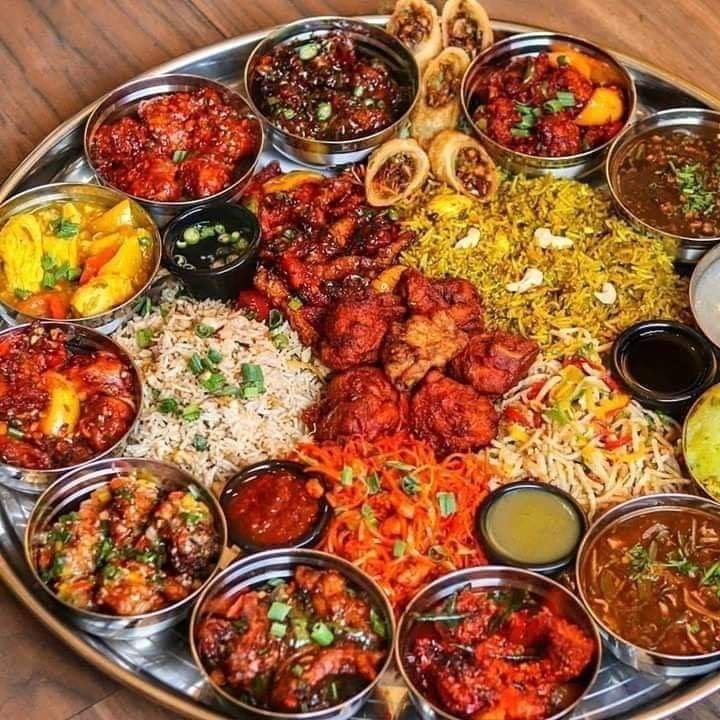
Food and Drink
India’s culinary landscape is a vibrant tapestry woven with centuries of tradition, regional diversity, and bold flavors. Food in India is not just sustenance; it is a celebration of culture, history, and community. Whether you are dining in a luxury hotel, a bustling street market, or a quaint village eatery, the food experience is unforgettable.
Regional Diversity and Signature Dishes
Each region of India boasts its own distinctive cuisine shaped by geography, climate, culture, and history:
- North India is known for its rich, hearty dishes featuring dairy, wheat-based breads like naan and roti, and tandoori cooking. Signature dishes include butter chicken, dal makhani, chole (spiced chickpeas), and paneer tikka. Cities like Delhi and Amritsar offer vibrant street food scenes alongside fine dining.
- South India offers lighter, rice-based meals with an emphasis on coconut, curry leaves, and tamarind. Staples include dosa (fermented rice pancakes), idli (steamed rice cakes), sambar (lentil stew), and a variety of chutneys. Coastal Kerala is famous for seafood delicacies and the traditional sadya feast served on banana leaves.
- West India features spicy and tangy flavors, with Gujarat known for its vegetarian thalis and Maharashtra for dishes like vada pav and pav bhaji. Goa’s cuisine reflects Portuguese influences, with seafood curries and feni (a local spirit) being popular.
- East India is famed for its sweets like rasgulla and sandesh, as well as fish-based dishes in Bengal and Odisha. Mustard oil and panch phoron (five-spice blend) are common flavor bases.
Street Food and Local Markets
Sampling street food is essential to experiencing India’s culinary soul. Popular snacks such as pani puri (crispy hollow balls filled with spicy water), samosas, chaat (savory snacks), and kebabs offer an explosion of flavors. While street food is delicious and affordable, travelers should choose vendors with good hygiene standards and busy stalls to avoid health issues.
Fine Dining and Culinary Experiences
Luxury hotels and upscale restaurants in India offer gourmet interpretations of traditional dishes alongside international cuisine. Many properties curate dining experiences that highlight regional specialties using fresh, local ingredients. For example, the Taj Hotels and ITC group properties organize cultural evenings with dance performances and themed dinners featuring local recipes.
Ayurvedic cuisine, emphasizing balance and wellness, is also gaining popularity in wellness resorts and spa retreats, offering meals designed to nurture the body and mind.
Beverages
No Indian meal is complete without beverages that complement the flavors. Chai, or spiced tea, is ubiquitous and deeply ingrained in daily life. Other popular drinks include lassi (a yogurt-based sweet or salty drink), fresh fruit juices, and nimbu pani (lime soda). Alcoholic beverages are available in most urban and tourist areas, with regional specialties like Goan feni and Indian craft beers gaining traction.
Must-See Attractions
Taj Mahal, Agra
The Taj Mahal remains India’s crown jewel and a global symbol of eternal love. This UNESCO World Heritage Site, built by Emperor Shah Jahan in memory of his wife Mumtaz Mahal, enchants visitors with its pristine white marble, intricate inlay work, and serene gardens. Sunrise and sunset views from the east gate offer magical photo opportunities. Nearby, the Agra Fort and Mehtab Bagh gardens add to the historical richness of the region.
Amber Palace, Jaipur
Set on a hilltop overlooking Jaipur, the Amber Palace is a stunning example of Rajput architecture with intricate mirror work, frescoes, and detailed carvings. Visitors can explore its sprawling courtyards and enjoy panoramic views of the city. The palace’s evening sound and light show vividly narrates its royal history, making it a must-visit in Rajasthan’s Pink City.
Kerala Backwaters
A network of serene lagoons, lakes, and canals fringed by palm trees, the Kerala Backwaters offer a tranquil escape into nature. Cruising on traditional houseboats through this lush landscape allows travelers to experience rural life, spot exotic birds, and savor fresh seafood. Towns like Alleppey and Kumarakom serve as gateways to this unique ecosystem.
Leh-Ladakh
For breathtaking mountain vistas and spiritual solace, Leh-Ladakh is unparalleled. This high-altitude desert region features stunning monasteries like Hemis and Thiksey, crystal-clear lakes such as Pangong Tso, and thrilling mountain passes. Adventure seekers can indulge in trekking, river rafting, and mountain biking amid stark landscapes.
Varanasi
One of the world’s oldest living cities, Varanasi is a spiritual heartland on the banks of the Ganges River. Witnessing the mesmerizing Ganga Aarti ceremony at the ghats, exploring ancient temples, and wandering through narrow alleys filled with vibrant markets are experiences that connect visitors deeply with India’s spiritual traditions.
Goa
Known for its golden beaches, vibrant nightlife, and Portuguese heritage, Goa is a favorite coastal retreat. Visitors can enjoy water sports, explore flea markets, and savor Goan cuisine rich in seafood and spices. The blend of colonial architecture and laid-back beach vibes makes it ideal for both relaxation and adventure.
Hampi, Karnataka
A UNESCO World Heritage Site, Hampi is a sprawling complex of ruins from the Vijayanagara Empire. Its giant stone temples, royal pavilions, and boulder-strewn landscapes create a surreal atmosphere. Exploring the ancient market streets and climbing Matanga Hill for panoramic views are highlights.
Darjeeling, West Bengal
Famous for its tea plantations and stunning views of the Kanchenjunga peak, Darjeeling offers a cool hill station charm. A ride on the Darjeeling Himalayan Railway, a UNESCO World Heritage narrow-gauge train, is a nostalgic experience. The town’s colonial architecture and vibrant bazaars add to its appeal.
Andaman and Nicobar Islands
For pristine beaches, crystal-clear waters, and rich marine life, the Andaman Islands are a tropical paradise. Popular activities include snorkeling, scuba diving, and exploring the historic Cellular Jail. The islands’ natural beauty remains largely untouched, offering solitude and adventure.
Shimla, Himachal Pradesh
Known as the Queen of Hills, Shimla is famed for its colonial charm, pleasant weather, and scenic beauty. Stroll along Mall Road, visit the Jakhoo Temple, and explore the Ridge for panoramic views. Nearby Kufri offers snow activities in winter, making Shimla a year-round destination.
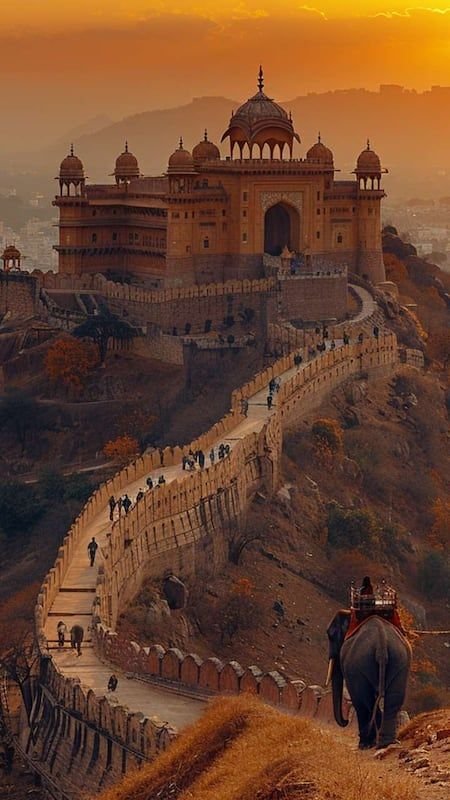
Must-Do Activities
Trekking and Adventure Sports in the Himalayas
Northern India’s Himalayan region is a playground for trekkers and adventure enthusiasts. Popular treks include the Markha Valley in Ladakh, the Valley of Flowers in Uttarakhand, and the Hampta Pass in Himachal Pradesh. Activities such as river rafting in Rishikesh, paragliding in Bir Billing, and skiing in Gulmarg offer adrenaline-pumping experiences amid breathtaking landscapes.
Houseboat Cruises in Kerala Backwaters
Glide through calm waters aboard a traditional kettuvallam houseboat, enjoying the lush greenery, quaint villages, and abundant birdlife. These cruises often include freshly prepared local meals and opportunities to witness village life along the canals.
Cultural Festivals and Fairs
India’s festivals are vibrant expressions of its cultural diversity. Witness the Desert Festival in Jaisalmer with folk dances and camel races, the Pushkar Camel Fair with its lively markets and rituals, or the colorful Holi celebrations across the country. Attending these events offers deep insights into local traditions and joyous communal spirit.
Wildlife Safaris
India is home to a rich variety of wildlife sanctuaries and national parks. Ranthambore and Bandhavgarh are famous for tiger sightings, while Kaziranga National Park in Assam offers a chance to see the rare one-horned rhinoceros. Elephant safaris, bird watching, and jeep rides through forests provide memorable encounters with nature.
Explore Ancient Temples and Monuments
From the intricately carved Khajuraho temples to the rock-cut Ajanta and Ellora caves, India’s ancient architecture is awe-inspiring. Visiting these sites offers a glimpse into the country’s artistic and spiritual heritage. The Golden Temple in Amritsar and the Sun Temple in Konark are other iconic spiritual landmarks.
Shopping in Local Bazaars
India’s markets are treasure troves of handicrafts, textiles, spices, and jewelry. Explore Jaipur’s Johari Bazaar for exquisite gemstones, Delhi’s Chandni Chowk for street food and fabrics, and Mumbai’s Colaba Causeway for eclectic souvenirs. Bargaining is part of the fun and culture here.
Yoga and Wellness Retreats
Rishikesh, known as the Yoga Capital of the World, offers numerous ashrams and wellness centers for meditation, yoga, and Ayurveda treatments. Kerala’s Ayurvedic resorts provide holistic healing experiences, combining traditional therapies with serene natural settings.
Culinary Tours
Embark on a gastronomic journey through India’s diverse cuisines. Sample street food in Delhi and Mumbai, enjoy royal Rajasthani thalis, savor coastal seafood in Goa, and indulge in sweets like Bengali rasgulla or South Indian filter coffee. Cooking classes and food walks are excellent ways to dive deeper into the flavors.
Photography and Nature Walks
India’s varied landscapes—from the deserts of Rajasthan and the lush Western Ghats to the tea gardens of Darjeeling and the mangroves of Sundarbans—offer stunning photography opportunities. Nature walks, bird watching, and sunrise hikes are perfect for capturing the country’s natural beauty.
Planning Your Experience
To make the most of your India trip in 2025, consider the season and region you wish to explore. The cooler months from October to March are ideal for most destinations, while monsoon months bring lush greenery to the south and west. Infrastructure improvements, such as new highways and better connectivity, make travel smoother than ever.
Whether you are marveling at the Taj Mahal’s marble splendor, cruising the tranquil backwaters of Kerala, trekking Himalayan trails, or immersing yourself in vibrant festivals, India’s must-see attractions and must-do activities promise a journey filled with discovery, wonder, and lasting memories.
Embrace the diversity, pace yourself, and allow the colors, sounds, and flavors of India to enrich your soul. Your 2025 adventure awaits.
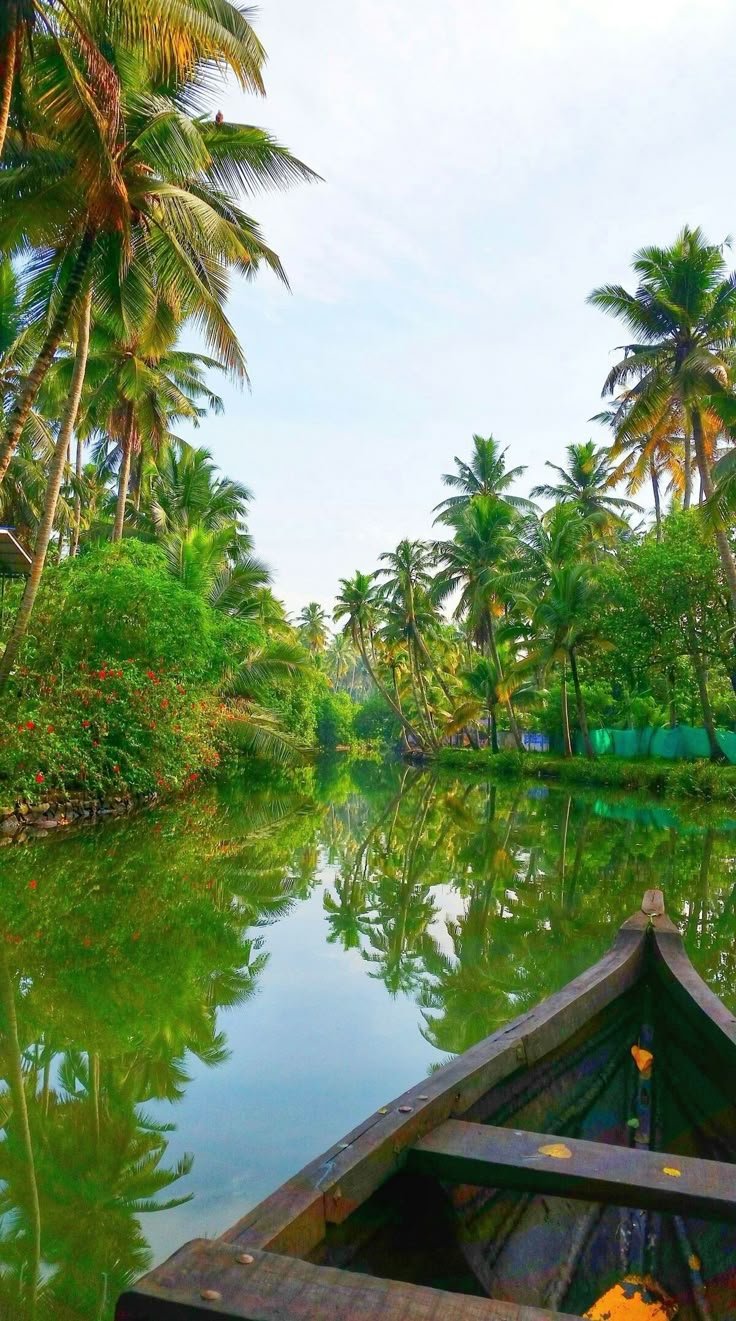
Travel Tips
Traveling to India in 2025 promises a rich and immersive experience filled with vibrant culture, stunning landscapes, and historic marvels. However, to fully enjoy your journey, it is essential to be well-prepared, especially regarding safety, understanding local customs, and basic communication. This guide provides practical, detailed advice to help you navigate India confidently and respectfully.
Safety Advice
India is a vast and diverse country, and while many areas are safe for tourists, some regions require increased caution due to crime, civil unrest, or terrorism. The overall travel advisory level is to exercise increased caution.
Key Safety Considerations:
- Avoid High-Risk Areas: The union territory of Jammu and Kashmir (except for the eastern Ladakh region and Leh), parts of Northeast India like Manipur, and some border areas near Pakistan are considered unsafe for tourists due to ongoing conflicts or terrorism threats. It is best to avoid these regions altogether.
- Urban Safety: Major cities such as Delhi, Mumbai, Jaipur, Goa, and Kerala are generally safe for tourists, but petty crimes like pickpocketing, bag snatching, and scams are common in crowded places and tourist hotspots. Stay vigilant, especially in busy markets, railway stations, and public transport.
- Solo Travel: Avoid traveling alone, particularly at night, and be cautious when accepting food or drinks from strangers, as there have been reports of spiked beverages leading to robberies or assaults.
- Transportation: Use reputable taxi services or app-based rides like Uber and Ola rather than hailing taxis off the street, especially after dark. Pre-paid taxis or hotel-arranged transfers are safer options. When using auto-rickshaws, negotiate fares upfront or insist on using the meter.
- Train Travel: Indian trains are a popular way to explore the country but take precautions. Keep your valuables secure, avoid accepting food or drinks from strangers, and be wary of ticket touts and scammers at stations.
- Road Safety: Roads can be chaotic, with poor maintenance, aggressive driving, and unpredictable traffic, including livestock on roads. Avoid driving yourself unless experienced with local conditions. Exercise extreme caution when crossing streets, even at pedestrian crossings.
- Emergency Numbers:
- Police: 100
- Fire and Rescue: 101
- Medical Emergencies: 102
- General Emergency: 112
- Health Precautions: India’s climate and sanitation standards vary widely. Drink bottled or filtered water, eat freshly cooked food, and carry basic medications for stomach ailments. Consult your doctor about vaccinations and malaria prophylaxis depending on your itinerary.
- Stay Informed: Monitor local news and government advisories for updates on civil unrest, protests, or natural disasters. Avoid demonstrations and strikes as they can turn violent unexpectedly.
Local Customs
India’s culture is deeply rooted in tradition, religion, and social etiquette. Respecting local customs enhances your experience and helps you build positive connections.
- Dress Modestly: Especially when visiting religious sites or rural areas, wear clothing that covers shoulders and knees. Women may prefer to carry a scarf or shawl for added modesty.
- Remove Shoes: It is customary to remove shoes before entering homes, temples, and some shops. Look for cues or ask if unsure.
- Greetings: The traditional greeting is Namaste, performed by pressing your palms together at chest level and slightly bowing. It is polite and widely appreciated.
- Respect Religious Practices: India is home to multiple religions—Hinduism, Islam, Sikhism, Christianity, Buddhism, and Jainism. Be mindful of religious symbols, rituals, and dress codes. Avoid touching sacred objects or statues unless invited.
- Public Displays of Affection: These are generally frowned upon, especially in rural or conservative areas. Keep interactions discreet.
- Photography: Always ask permission before photographing people, especially in rural areas or at religious sites. Avoid photographing military installations, airports, or border areas, as this is prohibited.
- Tipping: Tipping is customary in restaurants, hotels, and for guides or drivers. A tip of 5-10% is generally appreciated but not mandatory.
- Eating Etiquette: Many Indians eat with their right hand (left hand is considered unclean). If you join a local meal, try to use your right hand for eating and passing dishes.
- Social Sensitivities: Avoid discussions on politics, religion, or caste unless you know your company well. These topics can be sensitive.
Language Basics
India is linguistically diverse, with over 20 official languages and hundreds of dialects. However, English and Hindi are the most widely spoken and understood languages across the country, especially in urban and tourist areas.
Useful Hindi Phrases:
- Hello / Greetings: Namaste (नमस्ते)
- Thank you: Dhanyavaad (धन्यवाद)
- Please: Kripya (कृपया)
- Yes: Haan (हाँ)
- No: Nahin (नहीं)
- Excuse me / Sorry: Maaf kijiye (माफ़ कीजिए)
- How much does this cost?: Yeh kitne ka hai? (यह कितने का है?)
- Where is the bathroom?: Bathroom kahan hai? (बाथरूम कहाँ है?)
- Help!: Madad karo! (मदद करो!)
- I don’t understand: Mujhe samajh nahi aaya (मुझे समझ नहीं आया)
English Tips:
English is widely used in hotels, airports, and tourist areas, so basic communication is usually not a problem. However, learning a few local phrases shows respect and can open doors to friendlier interactions.
Final Thoughts
Additional Practical Tips
- Money: Use ATMs located inside banks or reputable establishments. Carry small denominations of cash for markets and tips. Credit cards are accepted in many urban areas but less so in rural regions.
- Connectivity: Purchase a local SIM card for affordable mobile data and calls. This helps with navigation, ride-hailing apps, and emergency contacts.
- Cultural Sensitivity: India is a country of contrasts, with urban modernity alongside deep-rooted traditions. Approach your travels with patience, openness, and a sense of humor.
- Environmental Responsibility: Avoid littering and be mindful of water usage, especially in drought-prone areas. Support eco-friendly accommodations and local artisans.
Traveling safely and respectfully in India in 2025 involves staying informed about regional risks, following basic safety protocols, and embracing local customs with an open heart. By preparing ahead and being mindful of cultural nuances and language, you will enrich your journey and create meaningful connections in this incredible country. India’s warmth and diversity await—travel wisely and enjoy every moment.

